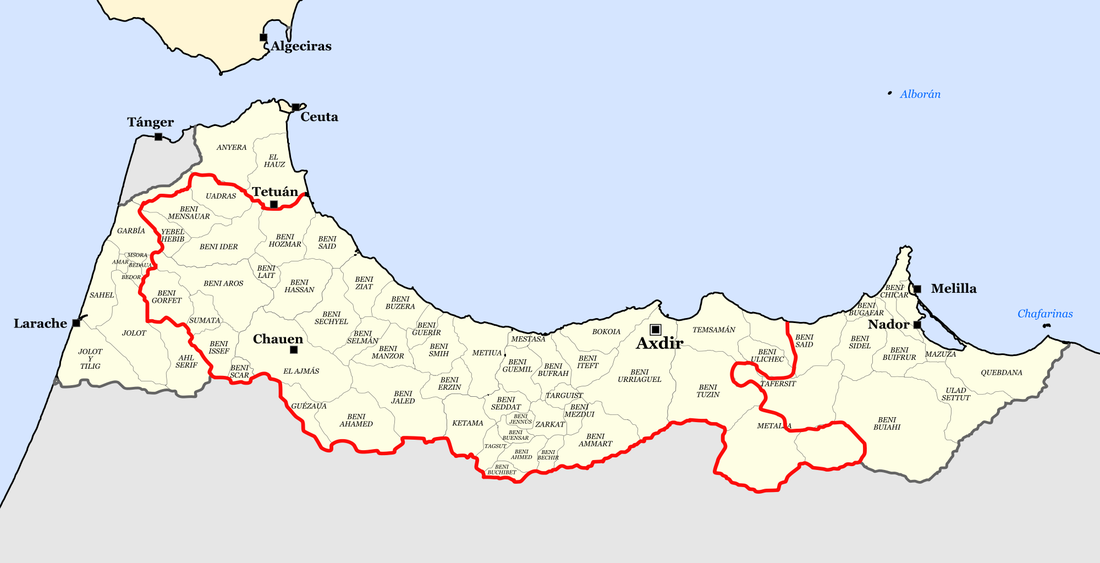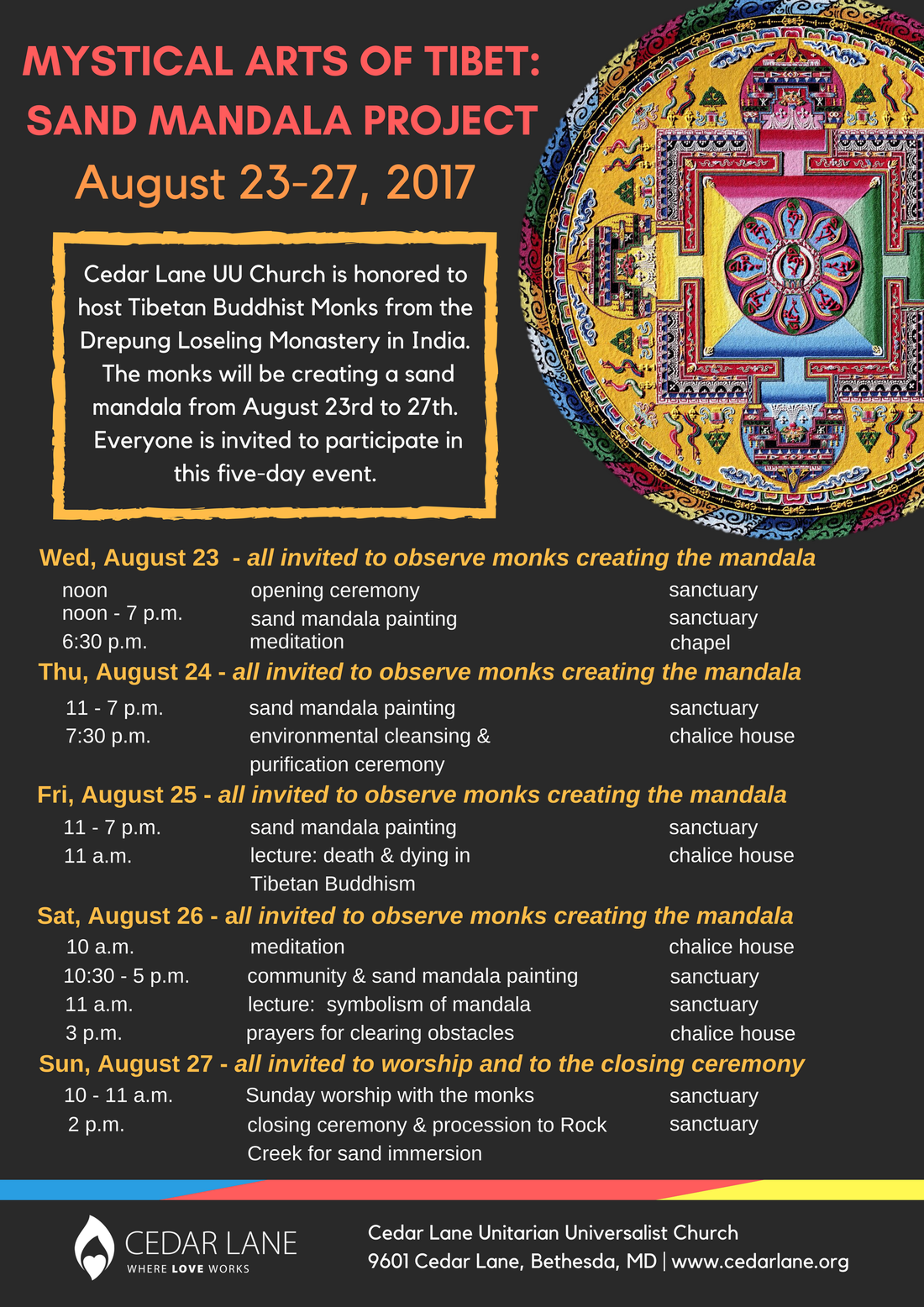|
President Trump recently stirred the pot (intentionally? inadvertently?) with comments referencing arch-rivals India and Pakistan in the context of U.S. strategy in Afghanistan. This map looks at who sells arms to India, who sells arms to Pakistan, and who (like the U.S.) sells arms to both. www.businessinsider.com/this-map-shows-which-countries-export-weapons-to-india-and-pakistan-2015-3
0 Comments
When Americans think of international refugees, they tend to think of Syrians because that's what's been in the headlines. However, with less fanfare, people fleeing conflicts in Africa have become the majority of the world's refugees. Ethiopia, Uganda, Kenya, and Chad are among the top 10 countries currently hosting the most foreign refugees. Earlier this month, Uganda accepted its 1 millionth refugee from South Sudan. Care to guess how many refugees the U.S. has admitted from South Sudan in the last year? I'll post the answer later today. www.bbc.com/news/world-africa-40959953
~~~ *According to data collected by the State Department's Refugee Processing Center, the U.S. admitted 216 refugees from South Sudan between Aug. 1, 2016 and July 31, 2017. At first glance, people tend to think this is an image of rice terraces somewhere in Asia. In fact, these are the famous salt pans of Maras, southeast of Lima, Peru. In use since the region was ruled by the Inca, these terraces dam salty stream water, which evaporates and allows for the collection of the salt. For some tourists, the salt pans of Maras are more impressive than the nearby ruins of Machu Picchu. www.atlasobscura.com/places/salt-pans-of-maras
Understanding the biogeography of hosts and vectors is key to tracking and stopping zoonotic diseases (diseases passed from animals to humans). Hurricane-related flooding across south Texas and the Gulf Coast, for example, will increase the likelihood of mosquito-borne diseases, including dengue, Zika, West Nile, and chikungunya. This map shows last September's range of the Aedes aegypti mosquito, which can transmit all four viruses. zikazoneusa.com/images/maps/r20160922.png
Should the same ethical standards apply to everyone, as suggested by Kant? Or should the powerful be left to define ethical standards for themselves, as suggested by Nietzsche? This article from The Economist (UK) looks at the psychological research on the relationship between ethics and power and implies that even if we agree with Kant, our behavior is more Nietzschean -- at least when we think no one's looking. www.1843magazine.com/features/does-power-really-corrupt
"The professor put a group of students on the case; sent them out with clipboards to loiter on the traffic islands of Berkeley. They monitored vehicle etiquette at road junctions, kept notes on models and makes. They observed who allowed pedestrians their right of way at street crossings; who pretended not to see them and roared straight past. The results couldn’t have been clearer. Mercedes drivers were a quarter as likely to stop at a crossing and four times more likely to cut in front of another car than drivers of beaten-up Ford Pintos and Dodge Colts. The more luxurious the vehicle, the more entitled its owner felt to violate the laws of the highway." Hurricane Harvey made landfall, twice, last night in south Texas. Although Harvey is a strong storm with sustained winds topping 130 mph, it is the accompanying rainfall and potential for flooding that particularly worries some forecasters. Houston, for example, which is the 4th largest city (and the 5th most populous metro area) in the U.S. may receive up to 35" of rain as Harvey moves up the coast. media2.govtech.com/images/940*933/map+%282%29.jpg
KIDfest, sponsored by the KID Museum, will be a free hands-on "maker" event, including talks and demonstrations, for the whole community on Sunday, Sept. 24 in downtown Silver Spring. For more, see kid-museum.org/kidfest/
The beginnings of the 2007-08 financial crisis are nearly a decade behind us. But recovery has been uneven. This geo-graphic compares states' recovery in terms of both employment numbers and GDP growth (red is weakest recovery, green is strongest recovery). howmuch.net/articles/the-current-state-of-usa-economy
Remembering is not the same as memorializing. Scores of countries around the world have had to make decisions about what to do with memorials erected by occupiers or by previous governments associated with atrocities or other distasteful legacies. This article looks at the experience of European leaders in dealing with memorials from their fascist, rebellious, monarchical, and Communist pasts. www.nytimes.com/2017/08/17/world/europe/european-monuments-statues-communism.html
Ever wondered why people from Glasgow are Glaswegians or people from Moscow are Muscovites? This article explores the rules, and exceptions, that give rise to demonyms (geographers' term for the people who inhabit a given place). www.atlasobscura.com/articles/demonyms-linguistics-nicknames
It has long been known Antarctica is volcanic: Mt. Erebus is the world's southernmost active volcano and has been erupting continuously for decades. Geologists recently found 91 new volcanoes under Antarctica's ice sheets. These volcanoes, currently dormant, are clustered in Marie Byrd Land, the portion of Antarctica directly south of New Zealand. www.sci-news.com/featurednews/volcanoes-west-antarctica-05129.html
This month's Oxford University Press "philosopher of the month" is Karl Popper. Popper was an Austrian-British philosopher who did most of his work on the philosophy of science but, based largely on his experience and observation of the rise of Nazism and WWII, also wrote a famous work of political philosophy.
"When I speak of reason or rationalism, all I mean is the conviction that we can learn through criticism of our mistakes and errors, especially through criticism by others, and eventually also through self-criticism. A rationalist is simply someone for whom it is more important to learn that to be proved right; someone who is willing to learn from others.... [The genuine rationalist] does think that, in the sphere of ideas, only critical discussion can help us sort the wheat from the chaff. He is well aware that acceptance or rejection of an idea is never a purely rational matter; but he thinks that only critical discussion can give us the maturity to see an idea from more and more sides and to make a correct judgement of it." For a brief overview of Popper, see blog.oup.com/2017/08/sir-karl-raimund-popper-timeline-philosophy This entertaining map shows the most famous franchise business hailing from each state. howmuch.net/articles/best-franchise-headquartered-in-every-state-2017
Where do our school supplies come from? China is the world's biggest producer of pencils, making roughly half the world's pencils, but Crayola Crayons are still made in Easton, PA. You can watch how crayons are made at the Crayola factory without leaving home: money.cnn.com/video/smallbusiness/2012/08/29/sbiz-hwgs-crayola-crayons.cnnmoney/index.html
A months-long civil protest, focused primarily in the mountainous region of northern Morocco known as the Rif, has gone all but unnoticed in the U.S. Protesters in Rif are objecting to police brutality, but this is just the latest chapter in Rif's estrangement from the rest of Morocco. Not only is the region mountainous, it is historically Berber, not Arab, and was a Spanish, not French, colony prior to independence in 1956, putting it at a geographic, linguistic, ethnic, and economic disadvantage when the country was re-unified. Even though Rif has a relatively small population, it has produced most of the Moroccan immigrants to Western Europe. This map shows the former colony of Spanish Morocco and the independent city of Tangier with, outlined in red, the once-aspirational Republic of Rif. upload.wikimedia.org/wikipedia/commons/thumb/4/43/Rep%C3%BAblica_del_Rif.svg/2000px-Rep%C3%BAblica_del_Rif.svg.png
Can a good defense beat a good offense? This article from Foreign Policy looks at radar installations and missile defense systems in Japan and South Korea. foreignpolicy.com/2017/08/11/mapped-u-s-and-allied-missile-defenses-against-north-korea
You're lost and without technology. Can you use nature's cues to help you out? This interview with "natural navigator" Tristan Gooley considers how to use tree shapes, the crescent moon, and other natural clues to navigate unfamiliar geography (at least in the Northern Hemisphere). www.atlasobscura.com/articles/wayfinding-tips-tristan-gooley-animation
The Southern Poverty Law Center, which has been tracking hate groups in the U.S. for decades, has created this interactive map of the 917 hate groups presently known to be operating in the U.S.: www.splcenter.org/hate-map. Update: For those interested in this issue, Geographical (UK) just published a cartogram (which adjusts for population) based on the same data: http://geographical.co.uk/.../2347-united-hates-of-america
Epistemology is the branch of philosophy usually described as the theory of knowledge: how do we "know" what we know and are there limits to what we can know? This article introduces epistemology's "Gettier problem." Is it accurate to say we "know" XYZ when we have reason to believe XYZ is true and it is true -- but not for the reasons we think? Here's an example, paraphrased from University of Birmingham (UK) philosopher Scott Sturgeon:
Suppose I burgle your house, find two bottles of Newcastle Brown Ale in the kitchen, drink them, and then decide to replace them before you get home. You remember purchasing the ale and have every reason to believe there will be two bottles of Newcastle Brown waiting for you at home. Your belief is justified and true. But what you think you "know" about your ale does not reflect the truth of the situation. nautil.us/blog/-this-simple-philosophical-puzzle-shows-how-difficult-it-is-to-know-something Despite growing friction between Russia and the West on a number of issues, this pair of maps, from Business Insider, shows how dependent much of Europe remains on Russian energy. (Russia supplies roughly 40% of the energy imported by the rest of Europe; Norway provides about 35%.) static4.businessinsider.com/image/59885bfe76084a25008b60e4-630/170804oprussiaimage2.jpg
If you and your kids have never watched Tibetan monks creating a sand mandala, you have an opportunity to learn about and observe this unique artistic and religious tradition Aug. 23-26 at Cedar Lane Unitarian Universalist Church in Bethesda. But don't wait too long: on Aug. 27, the mandala will be destroyed in keeping with Buddhist beliefs about the transitory nature of material life. cedarlane.org/images/Mandala_Schedule_August_23-27_2017_13.png
For the most part, the Himalayas separate India and China, but the two countries have long-standing border disputes at both the western and the eastern ends of their long border. It is the eastern end that is currently in the news. China is trying to extend a road across the Doklam Plateau, a strategic area bordering India and claimed by both China and Bhutan (an Indian ally). The Indian military has sent troops to the area, where they are presently in a high-altitude standoff with their Chinese counterparts. www.ft.com/content/d56c92b0-78e6-11e7-90c0-90a9d1bc9691
On August 2, we hit this year's "Earth Overshoot Day," the point at which humanity has used the quantity of the earth's resources that is likely to be sustainable, after which any additional use of resources diminishes resources available for the future. As the population of the planet and the wealth of its citizens have grown, demand for resources -- food, water, energy, manufactured goods, waste management, etc. -- has grown more, pushing Earth Overshoot Day earlier each year. (When it was originally calculated in 1970, Earth Overshoot Day came in late December.) With another two to five billion people expected to share the planet by 2050, this article considers leadership options for dealing with unsustainable use of resources, from doing nothing to incentives to reduce consumption to rationing resources. www.bbc.com/earth/story/20150812-can-rationing-save-the-world
In June, the western coast of Greenland experienced a mega-tsunami when rock, that had been frozen in place, was loosed by melting and crashed into one of the fjords rimming the coast of Greenland, triggering a 100 m. wave that wiped away a small fishing village. Mega-tsunamis, like the one that is believed to have destroyed the Minoan civilization on Crete, occur when massive amounts of rock -- generally from landslides or volcanic eruptions -- are suddenly displaced into relatively shallow bodies of water, generating huge (up to 500 m. tall!) waves. www.nature.com/news/huge-landslide-triggered-rare-greenland-mega-tsunami-1.22374
This topological map of the U.S. shows the average monthly electricity bill, by state, as well as the largest source of electricity for each state. In general, nuclear energy and diesel (petroleum liquids) are the most expensive sources of electricity and coal is the cheapest -- if using existing power plants. (If one wanted to build a new power plant, wind and solar plants produce the cheapest electricity.) Weather, especially use of air conditioning, also plays a key role in average monthly electricity bills. howmuch.net/articles/electric-bill-cost-by-state
|
Blog sharing news about geography, philosophy, world affairs, and outside-the-box learning
Archives
December 2023
Categories
All
|



 RSS Feed
RSS Feed